As businesses grow globally, Multilingual AI chatbots have become essential tools for this, allowing brands to communicate with customers in their preferred language and offer support that feels relevant to each culture. Businesses need to connect with diverse audiences in different languages and cultures. However, language barriers make it difficult for companies to engage with international customers properly. Many businesses struggle to respond quickly and accurately in multiple languages, leading to missed opportunities and dissatisfied customers.
AI chatbots provide a helpful solution. These smart tools can communicate in different languages seamlessly, allowing businesses to bridge language gaps and provide consistent multilingual customer support worldwide.
What is a Multilingual AI chatbot?
A multilingual AI chatbot is an virtual assistant capable of seamless communication in multiple languages. Using Natural language processing (NLP) and machine translation, it understands and responds to users in their preferred language. This allows organizations to connect with customers from diverse backgrounds, enhancing engagement, satisfaction, and loyalty by breaking down language barriers.
Multilingual chatbots also streamline support, ensuring users receive prompt and relevant responses, which helps businesses build stronger global relationships and grow their market reach.
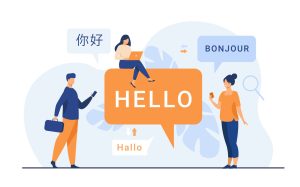
Challenges Businesses Face with Language Barriers
- Limited Engagement
Customers are more prone to participate when they can communicate in their preferred language. Without this option, businesses risk losing potential contacts, since language obstacles frequently discourage clients, resulting in lost possibilities for growth and retention.
- High costs
Employing multilingual support workers is expensive, especially for firms that are starting to expand abroad. These expenses can strain budgets and make scaling difficult, as recruiting competent personnel for each language can soon pile up.
- Inconsistent service quality
Manual translation can result in conflicting messaging because of differences in language and vocabulary. This discrepancy might lead to misconceptions, thereby frustrating or dissatisfying customers.
- Time delays
Response times can be considerably slowed by relying on human translators or distinct language-specific teams. Communication delays affect customer satisfaction as customers often expect quick, real-time support regardless of language.
How Multilingual AI Chatbots Overcome Language Barriers
- Real-Time Availability: Chatbots offer 24/7 customer care in multiple languages, allowing global clients to seek assistance at any time, no matter what time zone.
- Increased Conversion Rates: By offering clients a seamless, language-friendly experience, businesses may improve interaction, reduce abandonment rates, and boost revenues in foreign markets.
- Enhanced Customer Experience: Offering service in the customer’s preferred language enhances satisfaction, trust, and brand loyalty because it shows the business understands and appreciates their language issues.
- Multichannel Support: Multilingual AI chatbots can offer consistent support across many platforms (websites, mobile apps, and social media), allowing worldwide customers to communicate with the brand in their preferred channel
- Increased Market Reach: AI chatbots that support many languages allow organizations to interact with clients from around the world, removing language barriers and opening up new markets..
- Reduced Language-Related Errors: Chatbots that use natural language processing (NLP) can understand and react to requests more accurately, lowering the possibility of misunderstandings or errors caused by linguistic nuances.
- Consistent Brand Messaging: AI chatbots make sure that the company’s values and tone are consistent and clear in various languages. This helps to create a strong, identified brand image across multiple locations.
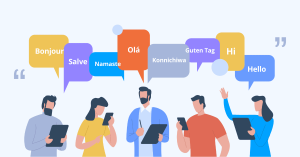
Benefits of Multilingual AI Chatbots for Businesses
Multilingual AI chatbots offer several benefits that enhance business operations and improve customer experience.
- 24/7 Global Support.
AI chatbots offer real-time, 24/7 assistance across time zones. Multilingual features ensure that customer enquiries are handled quickly, no matter when they arrive. This availability improves customer satisfaction and global brand reliability.
- Cost Efficiency
Multilingual AI chatbots save money on operations by automating routine enquiries in various languages. This cost-effective method allows firms to distribute resources more efficiently while maintaining high-quality service across areas.
- Scalability
Multilingual AI chatbots allow organizations to efficiently scale customer assistance as demand grows. They can manage multiple languages and maintain service quality as the consumer base expands. This strategy saves time and resources, allowing companies to reach a broader audience without increasing their staff.
- Accessibility
Multilingual AI chatbots improve accessibility by providing quick conversation in multiple languages, removing linguistic barriers for users. They ensure that people with diverse language preferences can get help and information at any time, which improves customer satisfaction across the world.
- Streamlined operations.
Integrating multilingual AI chatbots into current systems, such as CRMs, improves service procedures by routing enquiries, maintaining interactions, and organizing customer data. This integration improves operations, lowers complexity, and enhances customer relationship management.
- Consistent Brand Voice
Multilingual AI chatbots provide a consistent brand voice in all languages, offering a uniform conversation style. This consistency builds customer trust and brand awareness since clients receive the same level of support regardless of the language they speak.
How Multilingual AI Chatbots Improve Cross-Language Communication
Multilingual AI chatbots improve cross-language communication by customizing interactions to cultural and linguistic differences. Advanced Natural language processing (NLP) is used to recognise and respond to local idioms and regional accents.
This contextual knowledge enables accurate, native-like responses, resulting in seamless client engagements.
Real-time language switching capabilities close communication gaps, allowing international corporations to provide a consistent, seamless experience across languages in customer service, sales, and other areas.
Top 5 Multilingual AI Chatbots in 2024
- YourGPT AI chatbot
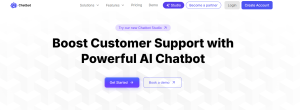
YourGPT AI Chatbot is at the top of multilingual capabilities, allowing brands to communicate in over 100+ languages. With advanced NLP, it is capable of handling multiple languages, making it suitable for global customer service and sales. It’s great for firms that need customized solutions to keep their brand voice consistent across numerous languages.
Advantages
- No coding is needed; you can immediately deploy an AI chatbot by training it with papers or links from a website.
- Turn every contact into a lead opportunity by asking visitors to complete a form before they access the chatbot.
- Connect with people all over the world, YourGPT chatbot can communicate in 100+ languages, removing communication obstacles.
- YourGPT easily connects with messaging apps, social media, and CRM to improve customer service and provide constant interaction across all platforms.
- Create personalized chatbots in minutes that are suited to your company’s requirements and branding.
- Sendbird SmartAssistant
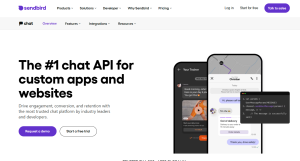
Sendbird AI Chatbot supports 80+ languages as of October 2024.It offers automatic language detection, which enables accurate and context-aware replies powered by GPT-4. It is suitable for global enterprises, as it combines NLP comprehension to ensure efficient and consistent customer engagement.
Advantages
- Reduce response time by giving quick answers to frequently asked questions.
- Use a single platform to interact with clients via chat, SMS, and social media.
- Make sure your clients are supported day or night.
- Create customized chat flows that enhance your client experience.
- LivePerson

LivePerson offers live translations in more than 20 languages and automatically detects user preferences. It is an excellent alternative for sectors that require a high level of client involvement, as it ensures real-time communication.
Advantages
- Use a single platform to interact with clients via SMS, the web, social media, and apps.
- When necessary, seamlessly switch from AI to human operators to ensure that all client concerns are resolved.
- Use AI-powered chatbots to automate discussions, enhancing efficiency and offering tailored responses
- Chat Fuel AI
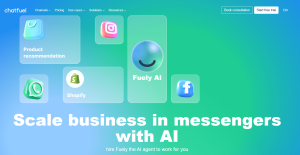
Chatfuel, a popular choice among small enterprises, provides multilingual capabilities in a low-cost bundle. It is simple to set up and customize, allowing businesses to install chat solutions rapidly without requiring considerable technical resources.
Advantages
- You can easily scale your chatbot to meet growing traffic and adjust to the expansion of your business.
- Customize interaction and conversation flows to your own business requirements.
- Use AI to personalize client interactions, automate discussions, and respond instantly.
- Intercom

Intercom multilingual chatbot solution combines real-time translation with strong NLP to enable nuanced, lifelike discussions across languages. It also works nicely with CRM systems, making it beneficial to customer experience teams.
Advantages
- Improve customer service by facilitating team cooperation through shared inboxes, task assignments, and internal notes.
- Make the switch from automated chatbots to live agents with ease, guaranteeing seamless customer service as required.
- Save time and increase productivity by automating processes like lead generation, onboarding, and follow-ups.
- Easily scale and adapt according to expanding business and customer demands.
How to Choose the Right Multilingual AI Chatbot for Your Business
- Language Coverage: To ensure seamless, accurate communication, confirm that the chatbot supports the necessary languages relevant to your organization.
- Response Accuracy: Prioritize chatbots with strong NLP skills to provide accurate, culturally suitable responses, ensuring seamless, natural interactions in all languages.
- Customisation: Choose a chatbot with customisable responses to match your brand’s tone and business needs, resulting in a consistent customer experience.
- Integration Compatibility: Ensure that the chatbot works seamlessly with existing platforms such as CRM, customer support, and other technologies to facilitate effective, data-driven interactions.
- Privacy Compliance: To secure user data, use a chatbot that complies with data protection rules (e.g., GDPR), especially in regions with severe privacy laws.
- Cost-Effectiveness and Scalability: Look for a solution that is within your budget and can scale with your company, enabling an increasing number of interactions without compromising performance.
Conclusion
Multilingual AI chatbots play an essential role for businesses looking to reach global audiences, providing consistent support across languages and enhancing customer satisfaction. They help companies connect effectively with diverse users, contributing to expanding market reach and stronger customer relationships.
YourGPT offers a powerful multilingual solution, enabling businesses to communicate efficiently across language barriers and deliver a tailored, cost-effective experience to users worldwide. From improving operations to supporting growth, YourGPT provides valuable tools for organizations to strengthen connections and succeed in an increasingly connected world.
FAQs
- How do multilingual AI chatbots improve customer satisfaction?
By allowing customers to communicate in the language of their choice, they provide a seamless, customized experience that fosters loyalty, contentment, and trust by helping customers feel appreciated and understood.
- Are multilingual AI chatbots costly to implement?
The price depends on the features you require, such as language support, scalability, and integration possibilities. However, most systems have flexible pricing structures that scale as your company expands, making them an affordable option for enterprises.
- What challenges do businesses face without multilingual chatbots?
Businesses suffer from poor communication, slow response times, expensive staffing, and uneven service quality across languages in the absence of multilingual chatbots, which can result in lost clients and lost prospects.
- Which kind of businesses gain the most from multilingual AI chatbots?
Any company with an international customer base or aspirations for worldwide expansion, such as e-commerce, banking, travel, and customer service, will tremendously benefit from providing language-inclusive, round-the-clock support.
- Can AI chatbots gather feedback from international customers?
Yes, they can collect real-time, multilingual feedback from customers globally, allowing businesses to respond quickly to needs, concerns, and suggestions.
- How do multilingual AI chatbots enhance operational efficiency?
They manage client data, automate enquiries in multiple languages, and integrate with CRM systems—all from a single platform—to streamline operations. This effectiveness aids businesses in responding promptly and maintaining orderly interactions.

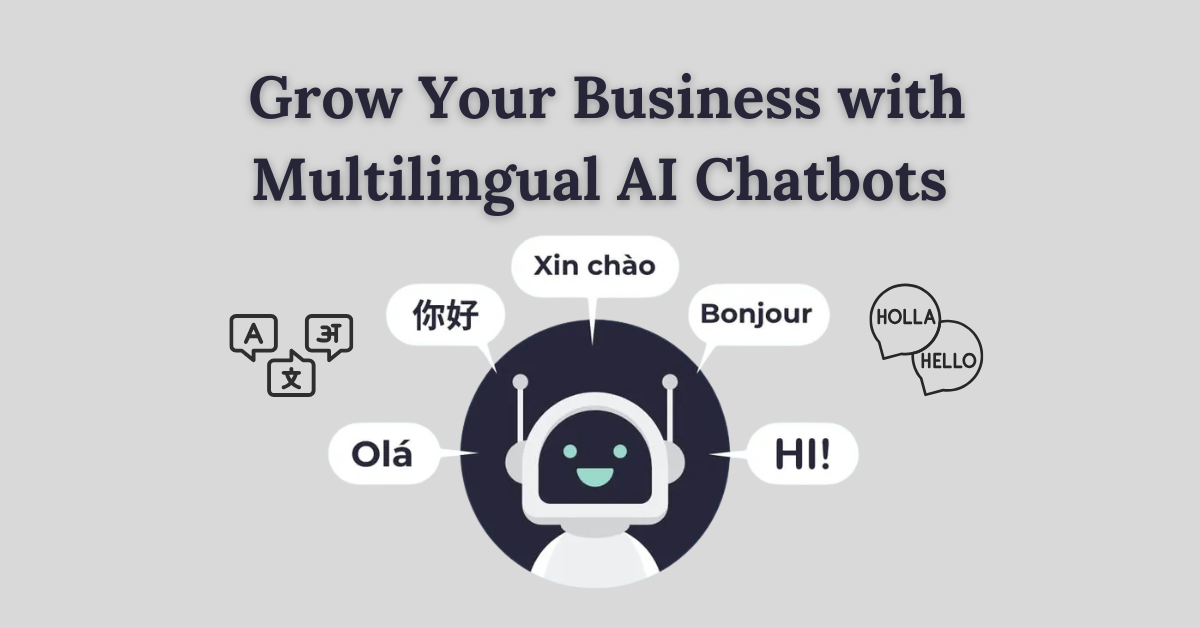
Leave a Reply